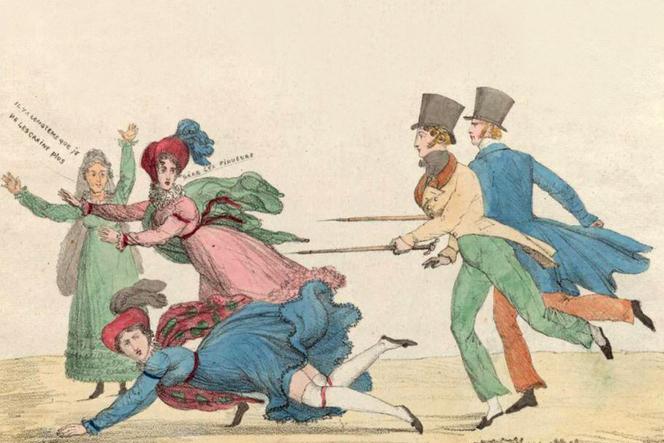
2022: France panics on nights out
On June 21, a new wave of violent jabs tarnished the Fête de la Musique (the annual summer music festival) all over France. Despite several reports, Minister of Culture Rima Abdul-Malak assured that it was a "psychotic phenomenon rather than a real one." Since the end of March, syringe attacks have been spreading everywhere, at festivals, in clubs and in bars. The reports are always the same: an invisible attacker; traces of a needle in the arm, buttocks or back; symptoms of varying intensity (headaches, vomiting)... and toxicological analyses that turn out to be negative. As of June 23, more than 1,000 complaints have been filed since the beginning of the year.
2009: An urgent problem in Xinjiang

In the context of heightened inter-ethnic tension in Xinjiang, China, a series of mysterious syringe attacks – 500 according to the authorities – crystallized the resentment among the Han population, the majority ethnic group in China, toward the Uyghurs, the main target of the accusations. Although the contents of the syringes were not identified, the official government press agency, Xinhua, claimed that "no one has been contaminated or poisoned." Beijing then spoke of a "separatist [Uyghur] plot to sow terror" without any supporting evidence. Prison sentences of up to 15 years were handed down to several Uyghurs.
2002: Henan's revenge makes Beijing nervous

In Tianjin (northeastern China), HIV-positive peasants from Henan province – victims of a high-profile blood contamination scandal in the 1990s – were suspected of seeking revenge by attacking random passers-by with syringes containing HIV-contaminated blood. Rumors swirled and spread to Beijing, 150 kilometers away. According to the authorities, nearly 50 people went to hospital to get their needle marks checked and at least four people were arrested, without their HIV status, nor even their provenance from Henan, ever being established.
1998: Canada caught up in the AIDS scare

In 1998, a rumor shook Canada. In Toronto, several young women were said to have been attacked with needles on nights out before finding disturbing messages, to say the least, hidden in their pockets: "Welcome to the world of AIDS." Faced with widespread fear, bar patronage dropped drastically in the area. Although the facts have never been proven, the rumor has circulated around the world in different forms. In one of the most popular versions, HIV-contaminated needles, along with the fatal message, were said to be hidden in the seats of movie theaters. No tangible evidence has ever lent credence to this urban legend.
1819: The epidemic of the 'buttocks prickers'

At the end of 1819, Paris was seized by the winds of panic: The Moniteur Universel, the official voice of the French government, revealed that within the space of a few months, 400 people – mostly young women – had been pricked to the point of bleeding, generally in the buttocks and in public spaces (in theaters, markets and streets). According to historian Emmanuel Fureix, this "crime committed amongst the anonymity of crowds and bodies" combines sexual vulnerability, moral panic and political instrumentalization. It was not until a man was sentenced to five years in prison that the anguish finally dissipated.